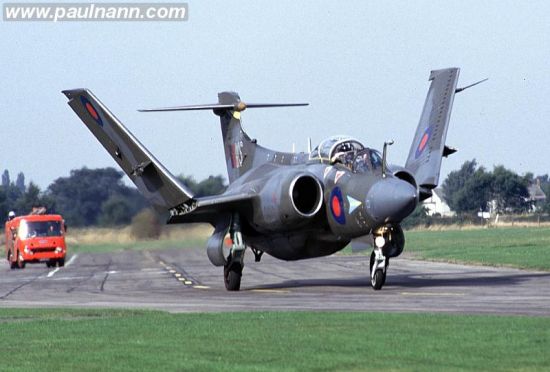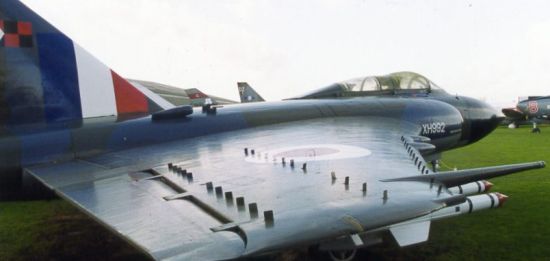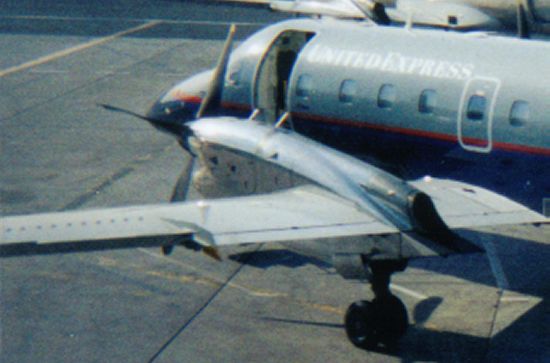Vortex Generators - How do they work
Thread Starter
Join Date: Nov 2006
Location: Sydney
Age: 46
Posts: 16
Likes: 0
Received 0 Likes
on
0 Posts
Would anyone out there like to have a shot at explaining to me EXACTLY how vortex generators work?
Yeah sure, they delay boundary layer separation (i think) and due to this, they give you an increase in MTOW, they redcuce stall speed and Vmca, blah blah blah........................
But how do they do what they do. I need an in-depth and logical explanation please.

Yeah sure, they delay boundary layer separation (i think) and due to this, they give you an increase in MTOW, they redcuce stall speed and Vmca, blah blah blah........................
But how do they do what they do. I need an in-depth and logical explanation please.

Join Date: Jun 2002
Location: New South Wales
Posts: 1,794
Likes: 0
Received 0 Likes
on
0 Posts
Join Date: Feb 2004
Location: adelaide
Posts: 25
Likes: 0
Received 0 Likes
on
0 Posts
Separation occurs when the boundary layer losses energy, basically it slows down and separates.
Vortex generators mix the less energetic air with more energetic air just above the boundary layer.
Vortex generators mix the less energetic air with more energetic air just above the boundary layer.
Join Date: Sep 2002
Location: La Belle Province
Posts: 2,179
Likes: 0
Received 0 Likes
on
0 Posts
They only do any of these nice things if you are being limited by some kind of separation-based flow phenomenom. All VGs can really do is prevent an early flow breakdown (or 'fix' a shock, I suppose). If you haven't got either of those, or if you do but they aren't actually limiting you, then all VGs will do is enable you to make your aircraft look like a porcupine.
Join Date: Mar 2006
Location: Herefordshire
Posts: 153
Likes: 0
Received 0 Likes
on
0 Posts
At high angles of attack the boundry layer will become 'unstuck' and the aircraft will stall. If you can imagine a large curlover of air, departing the top wing surface such that the curlover causes airflow at the trailing edge to be reverse in direction to flight, along the top surface. The vortex generators, being proud of the surface, cause a similar but smaller curlover in a lateral sence. If you wind a bit of paper around a stick then pull the ends apart you get a coil of paper like the coil of a spring, this is what the vortex might look like if you could see it. The airflow of the vortex has the effect of reaching up and grabbing the departed air and returning it to the wing and thus re-establishing a boundry layer, even though it is a turbulant one. This allows the wing to continue to fly when otherwise it would have stalled. When you fit high lift devices to the leading edge, the the wing will still fly but be uncontrollerble because the reverse flow at the trailing edge is in the wrong direction for the alerons to work. Vortex generators are thus normally place ahead of the alerons in this case so that the alerons will still function in the correct sense even into the stall, thus making the aircraft safer to fly at low speeds.
Join Date: Oct 2006
Location: UK
Age: 48
Posts: 73
Likes: 0
Received 0 Likes
on
0 Posts
If you've ever opened up the stopper in a sink full of water and watched the water swirl down the drain, you know what a vortex is. Simply put, it is an energetic swirling mass of fluid. Vortices are quite common in aerodynamics. Probably the most well-known and significant of these are the trailing vortices that are seen coming off the tips of wings in flight. These vortices are not desirable because they create a type of drag known as induced drag, or that drag induced by a surface generating lift (like a wing). Aerodynamicists often spend considerable effort trying to reduce the adverse effects of such vortices. However, vortices very similar to trailing vortices can also be used to produce beneficial effects, and one of the methods used to create beneficial vortices is the vortex generator.
When an aircraft flies at high angles of attack, the airflow over the wing can become detached, or it stops following the shape of the wing. When this happens, the lift produced by the wing will suddenly and rapidly decrease, and the wing stalls. When the flow separates from the wing, it usually means the air is moving too slowly, or there isn't enough energy in the flow to keep it moving. Since vortices are energetic, they can be used to put energy back into the flow to keep it moving in the desired direction. This is what vortex generators are designed to do. Vortex generators are simply small rectangular plates that jut above the wing surface. They look like tiny little wings jutting up perpendicular to the wing itself. As air moves past them, vortices are created off the tips of the generators just like the trailing vortices mentioned earlier. These vortices interact with the rest of the air moving over the wing to speed it up and help reduce the possibility of separation.
Vortex generators are typically used in the following applications:
When an aircraft flies at high angles of attack, the airflow over the wing can become detached, or it stops following the shape of the wing. When this happens, the lift produced by the wing will suddenly and rapidly decrease, and the wing stalls. When the flow separates from the wing, it usually means the air is moving too slowly, or there isn't enough energy in the flow to keep it moving. Since vortices are energetic, they can be used to put energy back into the flow to keep it moving in the desired direction. This is what vortex generators are designed to do. Vortex generators are simply small rectangular plates that jut above the wing surface. They look like tiny little wings jutting up perpendicular to the wing itself. As air moves past them, vortices are created off the tips of the generators just like the trailing vortices mentioned earlier. These vortices interact with the rest of the air moving over the wing to speed it up and help reduce the possibility of separation.
Vortex generators are typically used in the following applications:
- Swept wings at transonic speed: Many early swept wings were found to suffer from separation at transonic speeds because shocks formed on the wing create an increasing pressure that slows the air suddenly and causes flow separation. The Buccaneer attack plane and Javelin fighter are good examples of such aircraft.

A Buccanner folding its wings, note the vortex generators near the leading edge
The Buccanner utilizes one set of generators along the leading edge of the outer portion of the wing.

A Gloster Javelin showing the three sets of vortex generators located along the outer portion of the wing
Three sets of vortex generators are used along the Javelin's outer wing with one set located near the leading edge, another just before the ailerons, and a third set in between. The generators on both planes serve to break up the shocks formed at transonic speeds thereby delaying the effects of separation. The generators located just ahead of the ailerons on the Javelin wing also help improve the effectiveness of these control surfaces at low speed or high angle of attack, as discussed in the next example. - Ineffective control surfaces: The separation problem becomes even more significant since control surfaces like flaps and ailerons are usually located along the trailing edge of a wing. When the flow seperates from the wing, these control surfaces have little or no air flowing over them and they become ineffective. Thus, not only will the aircraft lose lift when the wing stalls, but the pilot may not be able to control the orientation of the aircraft. To correct this problem, vortex generators are often placed just ahead of the control surfaces to create a faster flow of air over the surfaces and increase their effectiveness. The following example shows vortex generators placed ahead of the ailerons on an EMB-120 commuter airliner.

Vortex generators on the wing of an EMBRAER EMB-120 - Short-takeoff and landing aircraft: These aircraft generally must operate at low speeds during takeoff and landing, so the flow speed over the wings tends to be low as well. Aircraft like the C-17 Globemaster III transport use vortex generators to create a higher-speed flow over the wings and control surfaces at these conditions to improve performance and controllability. In the case of the C-17, the vortex generators are located on the sides of the engine nacelles rather than on the wings but they still produce the same beneficial effects




